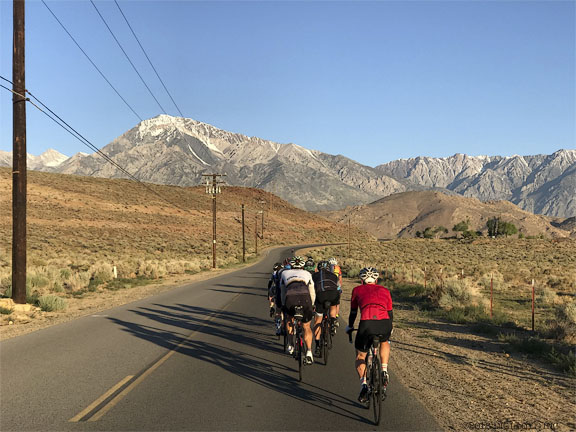The Best Performance Enhancer for Cycling: Drafting
For years now and in my past 39 double centuries, I have retained an iconoclastic individualistic sport ethic: soloing (no drafting) . I captured my thoughts on this topic and how it does not differ in principle from an electric motor in How is Drafting in a Paceline Different from an Electric Motor?. That is, it is external assistance.
The very mention of those two things in a sentence (electric motor, drafting) is enough to invoke severe cognitive dissonance among many riders, resulting in anger or denial or other brain-frying results. And yet not one rider has ever made any meaningful counter-argument to refute my assertion.
I acknowledge that in a race where drafting is a given, one does what one has to do, and it would be idiotic to do otherwise. Still, I recall in the Everest Challenge where some riders drafted other classes of riders (e.g., a man drafting woman or a tandem, a rules violation). Such is the ingrained rationalized cheating mentality that stems from not seeing drafting for what it is: an external assist. The inability to see the common principle correlates with the removal of mental barriers to real cheating, which I observed regularly in the Everest Challenge.
My position that if one is to claim an individual ranking in a double century, then showing up with a budy or two or three and pacelining through it is a group win, not an individual win and is thus at best misleading, if not outright fraudulent (a de-factor or real team shows up and competes, team members then claim individual finish times, which is fraud IMO). This is routinely done in double centuries, with absolutely no mention of the massive energy savings from doing so*.
* Witness for example 3 riders finishing at exactly the same time (3:26 PM) in the Joshua Tree Double Century—I stopped pedaling so they would stop drafting me, and let them go on by so I could resume my solo effort.
I want two things: (1) a fair contest and (2) a personal best effort, not a group effort. As to (1), it is “fair” in the sense that that I could potentially find (by luck and timing) a group to paceline with. But that would violate (2), which I deem antithetical to my conception of the achievement of a double century. I don’t see the point of such an extreme effort when the actual individual effort involved can vary from 100% to 30% or even less.
I’ve estimated, based on my SRM power meter readings, that drafting a single person can result in a 25% to 50% energy savings, depending on wind speed, e.g. 25 mph with no wind or 15 mph with a 10 mph headwind are similar. At 25+ mph, the savings rise exponentially and with more riders the savings increase.
Modern research on power savings
Along comes modern research which finds up to a 90% savings in the belly of the peleton, a figure that is consistent with the massive reduction in effort any cyclist can feel with even a few riders.
Cycling’s Best Performance Enhancer: Riding in the Peloton
For most of the riders most of the time, the view is the same: a mess of bikes, brightly-colored jerseys and exhausted skinny men. That’s because they spend the majority of the 80-plus racing hours from the start of the Tour to the Champs-Elysées tucked inside the peloton, the main bunch that coagulates in every stage and moves like a school of fish.
The peloton exists by practical necessity. Riding in a big group reduces drag and saves energy for the people in the middle. Cyclists have known this for a century. But only now, in 2018, is anyone able to put a number on just how efficient it is.
...
According to a new study published in the Journal of Wind Engineering and Industrial Aerodynamics, riders in the belly of a peloton are exposed to 95% less drag than they would experience riding alone. Which explains the sensation all riders describe of being sucked along by the bunch while barely having to pedal.
As for this study, it seems rather obtuse: outfit every rider with a power meter, and then just read out the average power for each of them (the power meter can record at half-second intervals to within 1% accuracy). With 121 riders, that would be much more accurate than a 1.5 year theoretical study requiring a supercomputer. Even the author is quoted as saying “We have a problem now, because no one is going to believe us”. Well, yes they will if empirical data is obtained as I just suggested—prove or disprove your calculations in the real world, Mr. Blocken! Because all models have flaws and in the real world there can be other factors not thought of in simulations.
Below, a not very efficient paceline into a ~12 mph headwind, but still a big energy savings for those doing it. I moved up close enough to use the 2X camera on the iPhone. I left all these riders behind but one by mile 100.

iPhone 7 Plus + iPhone 7 Plus 6.6 mm f/2.8 @ 6.6mm
[low-res image for bot]








